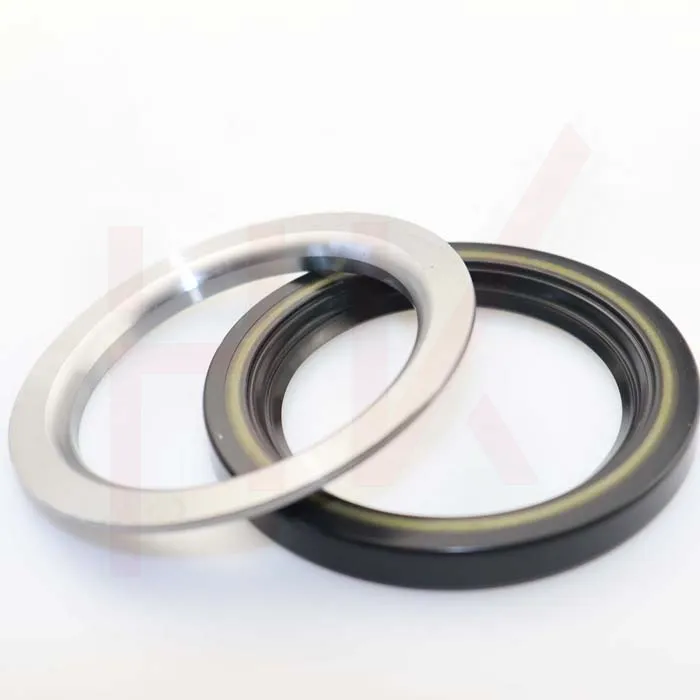9 月 . 08, 2024 11:19 Back to list
High-Quality Hydraulic Cylinder Oil Seals for Optimal Performance
Understanding Hydraulic Cylinder Oil Seals Importance and Selection
Hydraulic cylinders are essential components in various industrial applications, enabling machines to lift, push, and pull heavy loads with precision and efficiency. A critical aspect of their operation is the hydraulic cylinder oil seal, which plays a vital role in maintaining the integrity of the hydraulic system. This article explores the importance of oil seals in hydraulic cylinders and provides guidance on selecting the right type for your application.
The Role of Hydraulic Cylinder Oil Seals
Oil seals in hydraulic cylinders serve primarily to contain hydraulic fluid within the cylinder while preventing external contaminants from entering. This containment is crucial for maintaining the pressure required for effective operation. A hydraulic seal effectively closes the gap between the moving piston and the cylinder wall, ensuring a tight fit that minimizes leakage and maintains system efficiency.
Additionally, oil seals help protect the moving parts within the cylinder from dust, dirt, moisture, and other harmful substances that may cause wear and tear. A compromised seal can lead to fluid leaks, reduced hydraulic pressure, and potential machinery breakdown—all of which can result in costly downtime and maintenance.
Types of Hydraulic Cylinder Oil Seals
There are several types of oil seals available, each designed to meet specific application requirements
. Some common types include1. U-Cup Seals These seals are shaped like the letter U and are commonly used in hydraulic applications due to their excellent sealing capability. They can handle high pressures and are effective in both single-acting and double-acting cylinders.
hydraulic cylinder oil seal

2. O-Rings O-rings are versatile seals that can be used in various applications, including hydraulic cylinders. They are easy to install and can provide a reliable seal, but they may not be suitable for high-pressure environments without additional support.
3. Flat Seals Flat seals are used in conjunction with flat surfaces and can provide a good sealing solution in low-pressure applications. However, they may not be suitable for all hydraulic cylinder applications.
4. Lip Seals These seals feature a flexible lip that adapts to the shaft or cylinder wall, providing a strong barrier against fluid leaks and contaminants. Lip seals are particularly effective in dynamic applications where there is relative motion between sealing surfaces.
Selecting the Right Oil Seal
When selecting a hydraulic cylinder oil seal, it is vital to consider several factors
- Pressure Rating Ensure the seal can withstand the operational pressures of your hydraulic system. - Material Compatibility Choose materials that can resist chemical degradation from hydraulic fluids. - Temperature Range The seal material should withstand the temperature fluctuations the application experiences. - Environmental Conditions Consider external conditions such as exposure to dust, moisture, and temperature extremes.
In conclusion, hydraulic cylinder oil seals are critical for ensuring the efficient and reliable operation of hydraulic systems. By understanding the different types of seals and selecting the right one for your application, you can enhance the performance and longevity of your hydraulic equipment, thus ensuring minimal downtime and operational efficiency.
-
The Power of Advanced Sealing: High-Pressure Solutions for Modern Machinery
NewsOct.29,2024
-
Optimizing Machinery with High-Performance Oil Seals
NewsOct.29,2024
-
Maximizing Machinery Efficiency with Advanced Oil Seals
NewsOct.29,2024
-
Ensuring Equipment Longevity with Quality Oil Seals
NewsOct.29,2024
-
Enhance Equipment Performance with Quality Oil Seals
NewsOct.29,2024
-
Custom Oil Seals for Specialized Machinery Needs
NewsOct.29,2024
-
The Role of Wiper Seals in Dust Sealing and Oil Protection
NewsOct.20,2024
Products categories
















